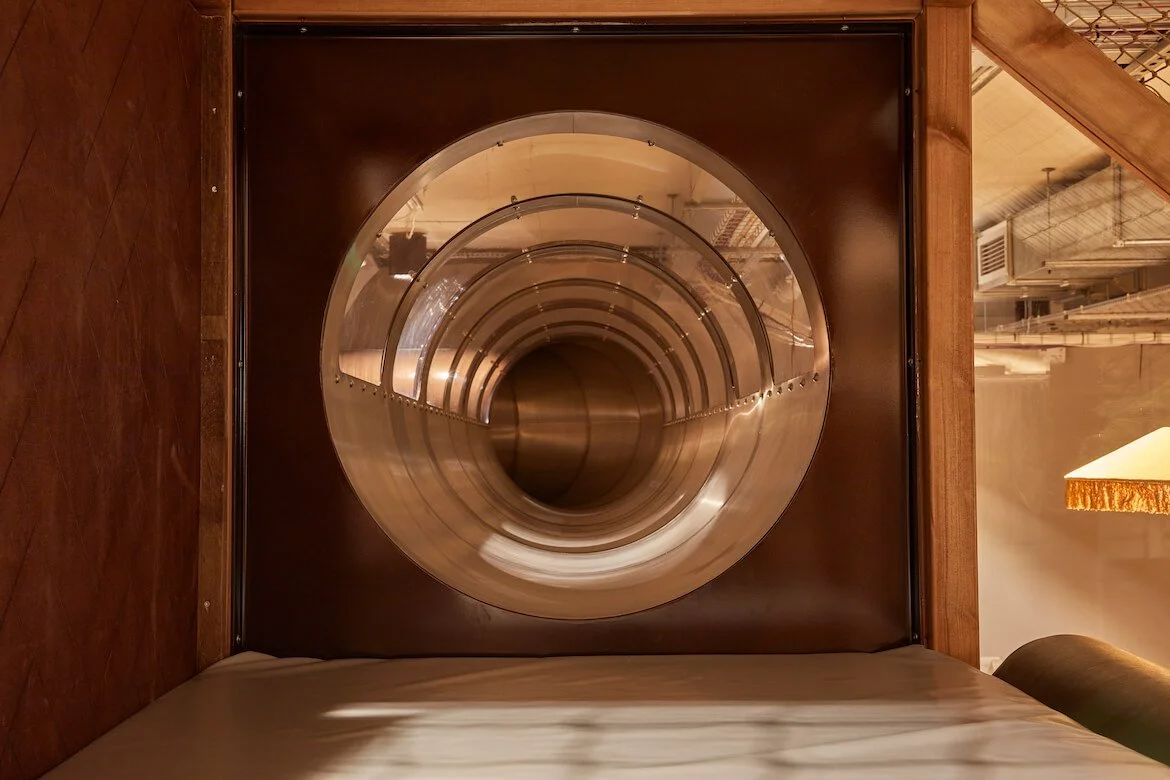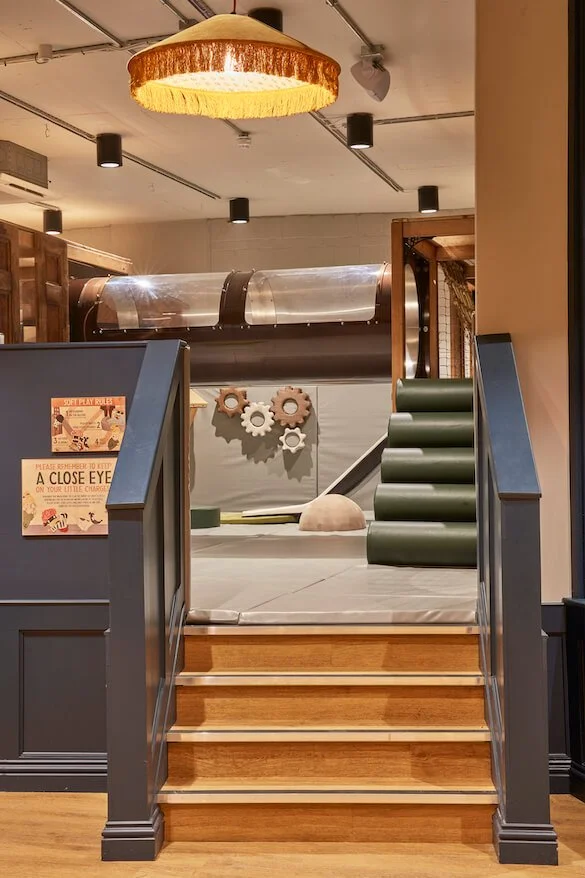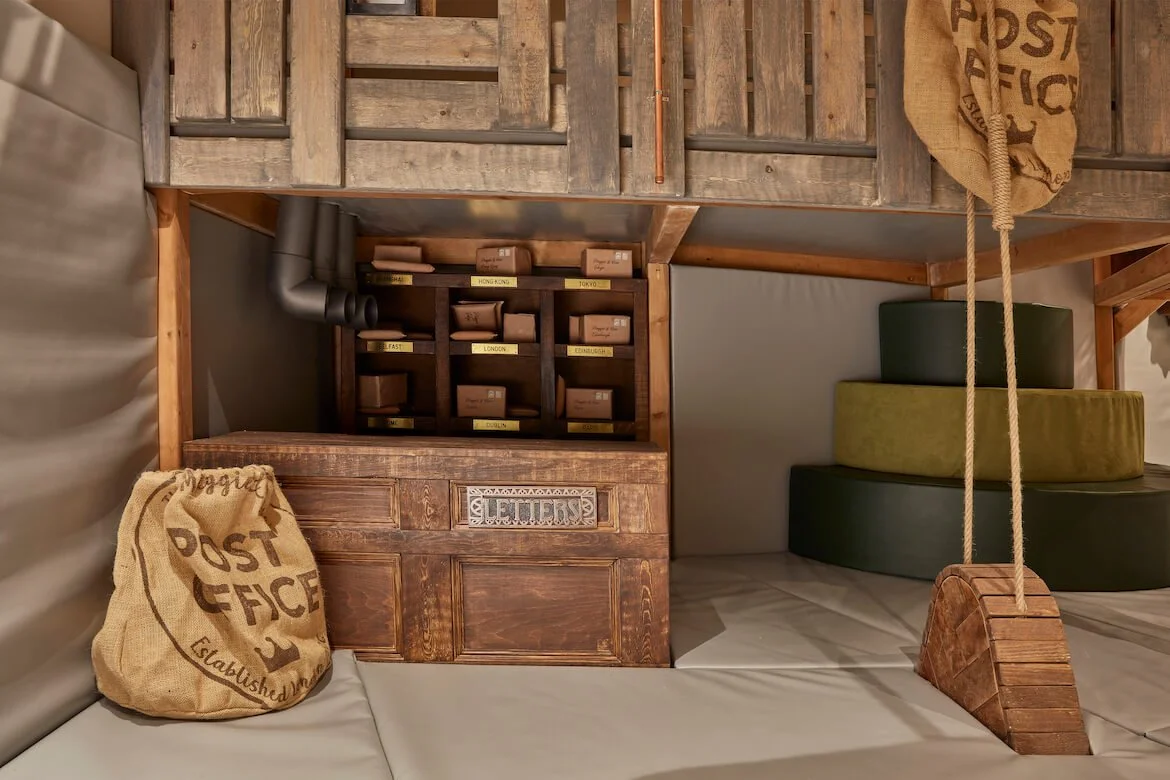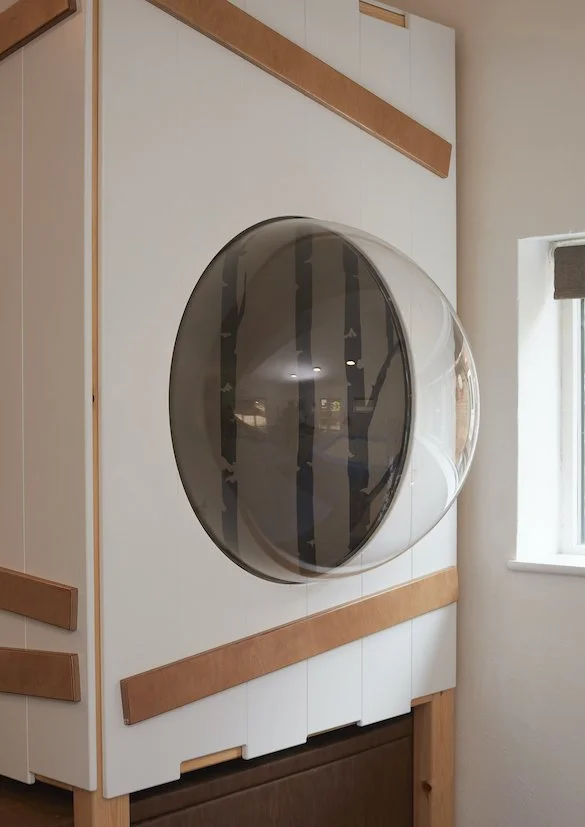Play schemas – what are they and how to consider them when designing a play space
Considering play schemas when designing indoor playgrounds can be hugely beneficial for development and it can make play spaces even more fun. This can be particularly important in designing sensory playrooms and areas for those with additional needs.
Schemas: Learning through play
Have you noticed how babies and toddlers sometimes love to repeat certain actions?
Continuing to drop toys from the pram or food from the highchair, emptying and refilling cupboards… this could be them engaging in schematic play.
As little ones learn about the world around them, it can be hugely beneficial to the development of the brain and motor skills to repeat and practise different actions.
Here we look at the different play schemas, what they mean and how to support schematic play in a soft play space or playroom.
Trajectory schema
The trajectory schema is one of the first schemas observed in babies. It’s all about discovering how they, and objects move.
Play equipment to support trajectory schemas would include swings, ball movers and water play.
Transporting schema
The clue is in the name here, but the transporting schema is about moving objects from one place to another, this could be by using their hands or transporters e.g. a trolley.
Role play designs are great for engaging the transporting schema. A role play supermarket could include groceries, trolleys, baskets and a till. Soft play ‘tools’ like these featured at Yarnton Home and Garden would work well also.
Enclosing schema
This is where children show an interest in enclosed spaces, these could be spaces they construct themselves or discover in a play space.
Soft play building blocks are great for building your own dens for hide and seek. Crawl tubes are also great for creating the feeling of being enclosed, but with a clear entrance and exit for safe access. Tepees also work well.Tepees also work well.
Rotational schema
Think twisting, turning and rolling. Those showing a rotational schema may enjoy turning taps, spinning wheels, unravelling a roll of ribbon and physically twisting their bodies.
‘Busy boards’ featuring wheels, cogs and spinning toys are great for the rotational schema, as well as soft play ‘dizzy discs’ for spinning their entire body.
Enveloping schema
This involves covering and hiding things, including themselves.
Peekaboo flaps revealing imagery within the play space could work nicely for this schema, as well as hanging vines or role play games such as this sorting office we created for Maggie and Rose, featuring lots of parcels to be enveloped into the mail bags.
Connecting schema
Those displaying this schema are keen to join things together. A great piece of play equipment for this schema is the Imagination Playground® set, or any set of toys that can be connected and taken apart.
Orientation schema
With this schema, children like to turn objects and themselves around and upside down, to get a view from under the table or from the top of climbing a play frame. They may bend over and look at the world backwards through their legs. It’s fun to see things from a different point of view.
This schema is perfect for soft play! Here we would advise a play structure that little ones can explore with various lookout points, like a hemisphere dome pictured here at Daisy Nursery.
Soft play design, manufacture and installation
No matter your available space, we can create a bespoke fun play space manufactured to the highest quality and installed with care by our dedicated installation team.
Tigerplay are an industry-leading soft play design company that specialise in the design, manufacture and installation of bespoke soft play equipment for kids of all ages.
You can learn more about our services here, hear what our happy customers have to say about us here, and find our contact details here to start discussing your ideas with our friendly team today.









